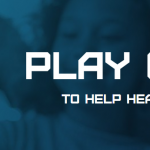Navigating Through The Storm
By: Chris Young
As a building leader, you’re experiencing a school year unlike any other. Most schools are offering traditional, in-person instruction, virtual instruction, hybrid models, and even different combinations of those models at the exact same time. It’s hard. No, it’s beyond hard. Opening a school building with such drastic changes taking place, while keeping teachers, families, and students content is a challenge like you’ve never faced before. On top of that, add onto it the fears of a COVID outbreak in the building, the administrators role is as difficult and stressful as it has ever been.
As I reflect on my own internal struggle, as an edtech specialist in these crazy times, I’m reminded of the proverb… “A smooth sea never made a skilled sailor.” With all of those challenges, this school year is the metaphorical perfect storm, but those challenges provide more than just obstacles. It provides opportunity! In my role, the opportunity lied in improving our online instructional design. We’ve made an incredible impact on the virtual learning experience for students within our district, which has in turn made its way into the physical classroom as well. I would like to share with you how we turned the challenge of remote learning into an opportunity for professional growth.
To begin, I want you to think about the good ole’ days… 2019! Envision the best lesson you observed last year. What was happening in that classroom? You likely witnessed students that were excited and engaged with the learning. You saw a passionate classroom teacher making their way around the classroom meeting students needs and facilitating positive interactions between students. While you could say that good teaching is an art, I believe that good instructional design is really a science. It’s a simple science at that.
In that lesson that you reminisced upon, there were only three types of classroom interactions that took place on that day. Students interacting with content, students interacting with the teacher, and students interacting with one another.
Put simply, the three types of classroom interaction are:
1. Student to Content
2. Teacher to Student
3. Student to Student
The opportunity this provided us was the ability to reflect on the virtual lessons that we had designed for students, and in many cases, unlike our best in person lessons, something was missing. We found, and if you were to have your teachers self-audit their lessons, that student to content interactions were easier to accomplish in an online environment, while student to student and student to teacher were more difficult.
If we know our best in person lessons have all three types of interaction, shouldn’t our online lessons be the same?!?
Teacher to Student
The teacher must be visible in the instructional and learning process in a virtual environment. I’m going to say it again because this is the most important line of the entire blog. The teacher must be visible in the instructional and learning process in a virtual environment. Text on an LMS that says, “read this” and “do that” is NOT teacher to student interaction. It may feel unnatural for the teacher to do, but the teacher’s face and voice absolutely are imperative to achieve authentic teacher to student interaction.
3 Ways To Achieve Teacher To Student Interaction
- The Camera: In the virtual environment, the camera needs to be the teacher’s best friend. Open up the camera and press record. Oh, and encourage teachers to accept their first take on that recording. Teachers are recording themselves over and over because it isn’t perfect, and after fifteen times they wish they had that first recording back. If we make a mistake in the classroom, we don’t start the lesson over. We move on, so let’s apply that same grace in a recording!
- Video Conferencing: Teachers are also facilitating live interactions through video conferencing tools like Zoom, Google Meet, and/or Microsoft Teams. This is a new world of classroom management, and the most successful virtual teachers have clear expectations communicated to the students. For example, students entering with microphones muted, and some sort of expectations for how students use the chat are a must!
- Screencasting: Teachers can pre-record instruction by sharing their face and computer screen at the same time through tools like Loom and Screencastify. I prefer Loom because they’ve made their full version free for teachers forever!
Student To Student
Of all three, this is arguably the most difficult to achieve, but luckily there are some tools out there that make this easier than ever.
- Flipgrid: An online video discussion for students. At the most basic level, the teacher can pose a question and students can reply via video to the question and also to one another. Students absolutely love it, and the full version of Flipgrid is 100 percent free for teachers. In my opinion, it has been the MVP of virtual learning! It’s teacher to student and student to student all in one! It’s great for in person classes as well. If you have teachers that haven’t explored Flipgrid with their in person or virtual classes, this should be the first tool you encourage them to explore!
Last March, we had a staff “teacher’s lounge Flipgrid,” for each building that our principals set up where teachers would just talk during quarantine. We had teachers telling jokes, sharing their wins, and even some teachers sharing progress learning an instrument. It was a great way to continue to build relationships and culture in a virtual environment.
- Padlet: Padlet is a versatile tool that allows students to interact with one another. Imagine an online cork board where messages, photos, links, and even videos can be posted for the class to see. Padlet is a freemium tool, where you get limited access. The free version is incredibly nice, but teachers are limited to the number of Padlets they can have open at one time.
Utilizing classroom interactions as a lens to examine the effectiveness of our virtual instruction is powerful, and if you want to know more about it, I would recommend fellow Indiana educator’s book, The Perfect Blend where author Michele Eaton goes into much further detail on that and more.
Speaking of more, right now, our teachers need more than high quality professional learning. I am in a unique position where I work closely with teachers implementing virtual learning, and I hear the good, the bad, and the ugly. I want to close this blog with one final thought, and I think it’s important for leaders to share with teachers.
We are sailing through uncharted waters. In instances where teachers are trying to navigate teaching in person and virtual students at the same time, there are no best practices. You can find books and research on highly effective traditional teaching methods. You can find similar books on highly effective virtual teaching methods as well. There aren’t established best practices for doing both of these at the same time, and we know that we are going to try things that won’t work. Failure isn’t easy, but it is always a part of growth, especially when the path to success has not been forged before us. Perspective will matter more now than ever. As you and your staff are experiencing stormy days and rough seas, look beyond those clouds and grasp the glimmer of light in the form of opportunity. When this storm passes and your choppy waves calm, you’ll have the most skillful sailors/teachers that you’ve ever led, and all of your students will benefit for years to come!




